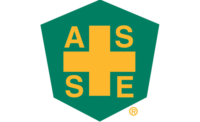Employees who drive for work face significant roadway risks, and motor vehicle crashes can devastate families, communities, and organizations. Crashes are the leading cause of workplace fatalities, with 1,252 deaths of vehicle drivers and passengers on public roads in 2016. In 2013, on-the-job crashes cost employers over $25 billion and led to 155,000 lost work days. Despite the human and financial costs of crashes, only 24 percent of employers offer occupational health services as part of their wellness programs. Furthermore, the available safety training does not always improve worker health outcomes.
Safety programs developed to prevent motor vehicle crashes are unlikely to work unless they are designed with employers’ needs and constraints in mind. This is particularly true among smaller and midsize employers, which need additional resources and knowledge to be successful. Workplace safety experts can develop better communication campaigns for small businesses when we talk to employers and employees to better understand their needs.
The Study
In 2016 and 2017, RTI conducted a study on behalf of the National Institute for Occupational Safety and Health (NIOSH) to find out what motor vehicle safety topics and products would be of greatest use to small businesses. Four focus groups were conducted with 33 managers of employees who drive for work. The managers represented small businesses across four motor vehicle user groups: first responders, oil and gas workers, light-vehicle drivers (e.g., workers who operate passenger vehicles for a variety of work purposes, such as salespeople, home health care workers, realtors, and food delivery workers), and truck drivers. Each conversation focused on a single user group, and explored safety hazards most relevant to that group. Although findings from the focus groups are based on a limited number of participants and may not reflect the experiences of all small businesses, the discussions offered valuable lessons that may benefit safety professionals and employers.
Findings
The focus groups revealed that some industries prioritize motor vehicle safety more so than others. For example, managers of first responders and oil and gas workers said their organizations have formal safety programs with considerable attention given to motor vehicle safety. However, managers of truck and light vehicle drivers described a range of other approaches to safety, such as mandatory vehicle inspections. This range of approaches was often less comprehensive and organized than a formal safety program.
Companies with well-developed safety programs sought safety program communications that emphasize threats specific to their work situation, like distractions from many different communication channels when responding to an emergency. Managers with limited safety resources preferred comprehensive and easily modifiable materials that would allow them to identify and select products most relevant to starting a safety program at their organization.
Managers also said that safety materials need to be designed taking into account the very limited time that they and their drivers can devote to safety training. Drivers’ varied work schedules and intense workload limit opportunities for group discussions about roadway safety. Managers said they and their drivers prefer concise, highly visual, and interactive communication products, such as short videos and simulations. Lengthy, text-heavy products cannot easily be reviewed by drivers who spend much of their work time on the road, and may be off-putting to workers, like trucker drivers who are accustomed to working challenging schedules or first responders who work in high-adrenaline situations.
The research suggests that traditional, formal worksite safety materials do not always resonate with small employers, who prefer tailored, engaging content designed for quick review and conversation. An understanding of employers’ industry, workflow, and culture can help inform the development of better communication products.
This blog is jointly posted on the RTI blog.






